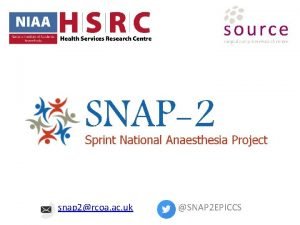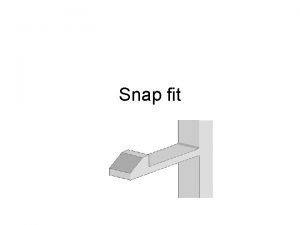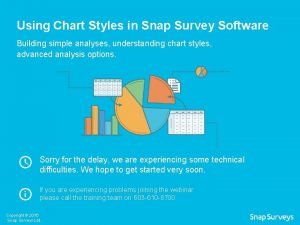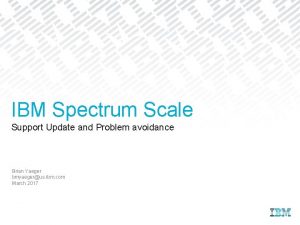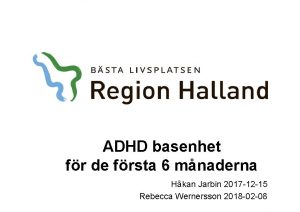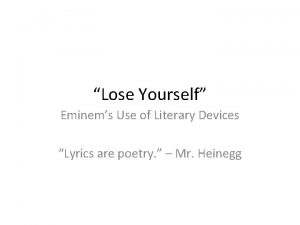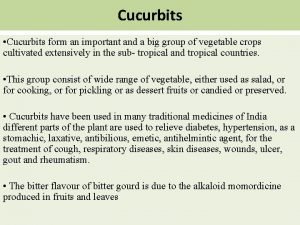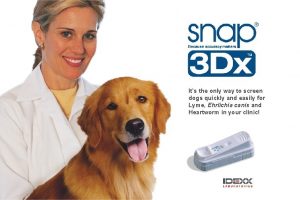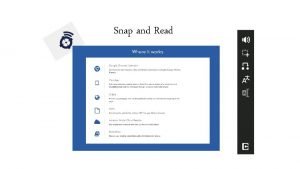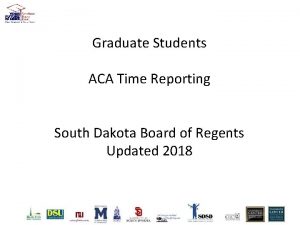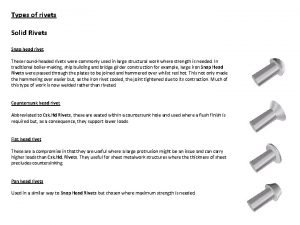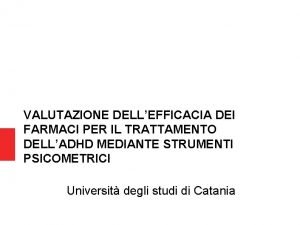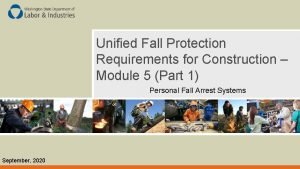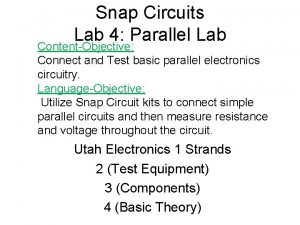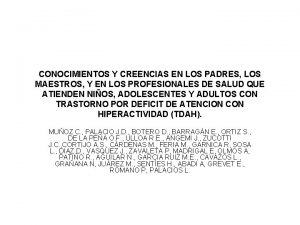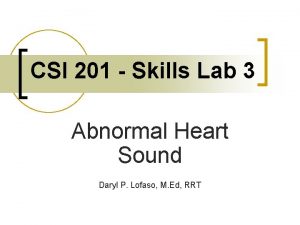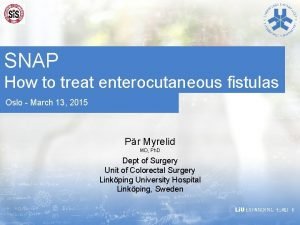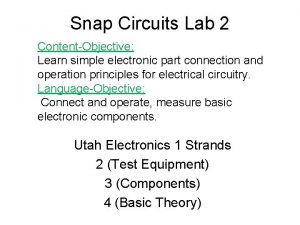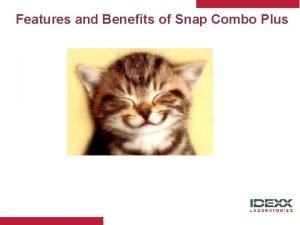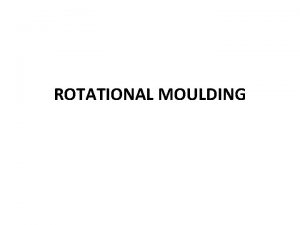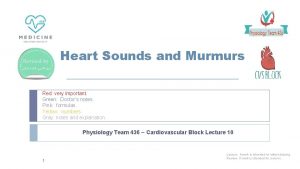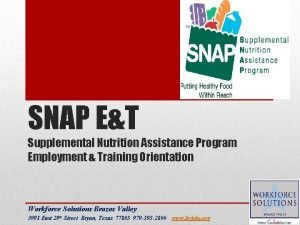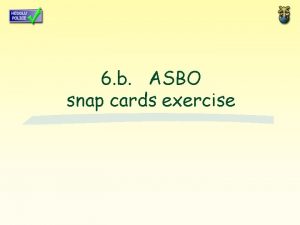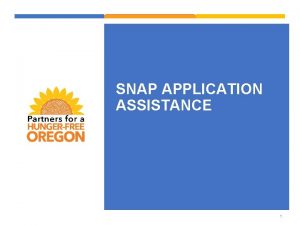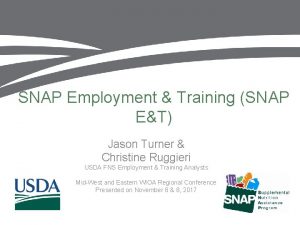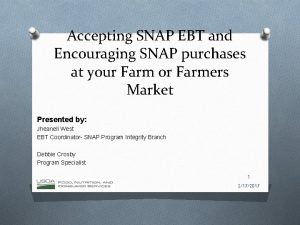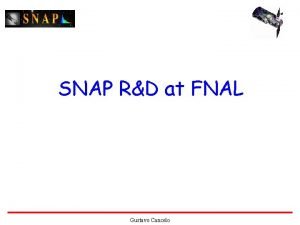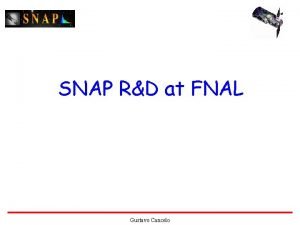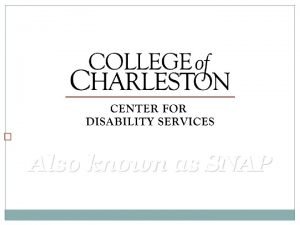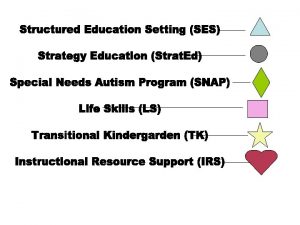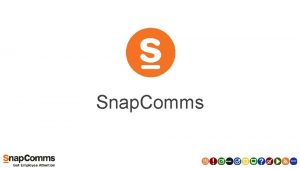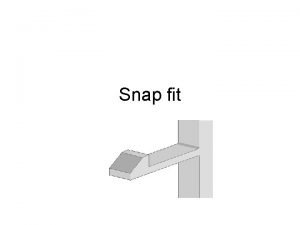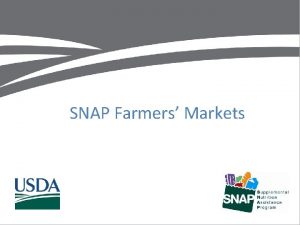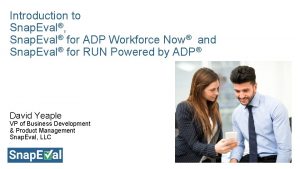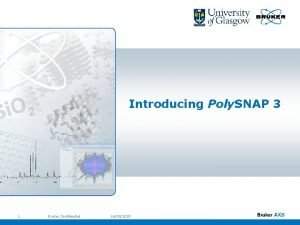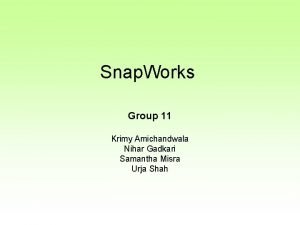SNAP2 snap 2rcoa ac uk SNAP 2 EPICCS



































- Slides: 35

SNAP-2 snap 2@rcoa. ac. uk @SNAP 2 EPICCS

SNAP-2: EPIdemiology of Critical Care provision after Surgery (EPICCS)

The Problem • 80+ y/o granny needs surgery • Multiple comorbidities • High risk! • Where should she go afterwards? http: //i. telegraph. co. uk/multimedia/archive/02712/GRANNY 8_2712464 a. jpg


k s i r y t i l a ort m % 0 1 ≥ e r a C l a c i Crit ≥ 5% m ortality Critica risk l Care

Low Critical Care Admission Rates 1999 -2004: 12. 5% of patients are high-risk, account for >80% of deaths. But <15% admitted to Critical Care. 2011: 6. 3% admitted to ICU/HDU in UK, 8% worldwide. 73% who died, did not go to Critical Care

• 60% admitted to ICU/HDU • 89% of highest risk (≥ 10% mortality) • 64% of high risk (≥ 5%)

So why aren’t we admitting to ICU/HDU? • A lack of capacity? • Inadequate risk stratification? • Equipoise over Critical Care benefits?

Lack of Capacity? • Adhikari et al, Lancet 2010 • UK: 3. 5 ICU beds/100, 000 pop • Germany 24. 6 beds/100, 000

Lack of Capacity?

Extrapolating from the literature Post-op Critical Care Admission % (from Eu. SOS) 14 Spain 12 Germany R 2 10 8 6 Country UK 4 2 0 0 5 10 15 20 25 ICU Beds per 100, 000 pop (from Adhikari et al) 30

Inadequate Risk Stratification? • NELA: 44% of patients did not have risk documented • Wide variation between hospitals which documented pre-op risk

We all know who’s high risk, right?

We all know who’s high risk, right? s t n e i t a p y l s r t e n d l e i E t a p y s c e r n e u g d r e e c o r Em p k s i r h g i h e Som


The Prevention Paradox Illustrated

The Prevention Paradox Illustrated

The Prevention Paradox Illustrated

Maybe we should risk stratify EVERYONE? http: //www. sortsurgery. com/

Equipoise over benefits of Critical Care? • No real RCT evidence to say going to ICU/HDU post-op is beneficial • Small survey prior to grant application asked: “Is there equipoise on post-op Critical Care admission with threshold predicted mortality >2%? Yes 65% No 24% Uncertain 11%

SNAP-2 Aims 1. Describe and analyse the epidemiology of critical care admission after inpatient surgery in the United Kingdom 2. Determine whether elective postoperative critical care admission is an effective intervention in improving patient outcomes (morbidity, mortality and quality of recovery) 3. Explore clinicians’ perceptions regarding perioperative risk stratification and postoperative critical care admission

SNAP-2 Plan • Prospective cohort study • 1 week duration in March 2017 • All UK inpatient surgery – Enrol all patients (non-consenting) – Enrol all anaesthetists for clinicians’ perception (consent at anaesthetist level) – Enrol subset of patients to complete Quality of Recovery Questionnaire

Statistical/Study Design Problems • Powering for mortality – Hazard reduction 0. 7 to 0. 9 & allocation ratio 1: 10 – 30 -day Mortality 1%? Hazard Ratio (HR) Overall mortality rate 0. 70 0. 75 0. 80 0. 85 0. 90 1% 1% 1% – 30 -day Mortality rate 5%? Hazard Ratio (HR) Overall mortality rate 0. 70 0. 75 0. 80 0. 85 0. 90 5% 5% 5% Minimum number of events (deaths) required 600 923 1, 533 2, 890 6, 876 Minimum sample size (n) required 60, 605 93, 159 154, 839 291, 904 694, 532 Minimum number of events (deaths) required 600 923 1, 533 2, 890 6, 876 Minimum sample size (n) required 12, 121 18, 632 30, 968 58, 381 138, 907

Powering for Morbidity Grocott, M. P. W. et al 2007. ‘The Postoperative Morbidity Survey Was Validated and Used to Describe Morbidity after Major Surgery’. Journal of Clinical Epidemiology 60 (9): 919– 28.

Powering for Morbidity • Assuming 46% morbidity and considering 520% reduction in morbidity Proportion in general ward (p 1) % reduction in ICU Proportion in ICU (p 2) Minimum sample size (n) required 0. 462 5% 0. 439 39, 874 0. 462 10% 0. 416 10, 076 0. 462 20% 0. 370 2, 565

Ethics issues • Main patient study consent issues: – Aiming for full coverage of ALL patients in the UK – Higher risk patients may be unable/unwilling to consent – Difficult to consent >10, 000 patients – Section 251 exemption to record patient identifiable information – Avoid sampling bias

Ethics issues • Clinician sub-study consent – Implied consent from completion of questionnaires – Asking clinicians to tell us risk assessment strategy, which may conflict with national guidelines – Responses used in confidence and without fear of litigation • Consent for Qo. R sub-study – Implied consent if patients fill in the questionnaire

Ethics issues • Database will be hosted at the RCo. A • ? Similar to the NELA data entry tool

Statistical Analysis Plan • Descriptive statistics • Logistic regression for independent predictors of ICU/HDU referral • Calibration of risk stratification tools – ASA-PS – p. POSSUM – SORT – Surgical risk scale

Clinical Effectiveness of Critical Care • Methods: – Propensity score matched analysis – Instrumental variable analysis • Outcomes: – 1°: Morbidity (7 -day POMS) – 2°: Mortality (30 -day, 90 -day and 1 year), Qo. R, cost-analysis, LOS, etc

Propensity Score Matched Analysis • Well-established method • Match patients going to Critical Care against controls by taking into account confounding variables • Attempts to create 2 comparable groups by matching as closely as possible

Instrumental Variable Analysis • Used in economics, but less in medicine • Attempts to reduce selection bias by linking allocation to intervention/control based on a random event • IV Replaces the coin toss • Bed occupancy levels

Conclusion • SNAP-1 was a success! Published in December, Pub. Med processing >1500 collaborator names • SNAP-2 is coming, and will answer interesting questions • We really need your help!

Thanks!

For More Information • http: //www. niaa-hsrc. org. uk/SNAPs • snap 2@rcoa. ac. uk • @SNAP 2 EPICCS
 Sortsurgery
Sortsurgery Filing snap fit snap partner maylundentechcrunch
Filing snap fit snap partner maylundentechcrunch Snap survey software
Snap survey software Gpfs.snap
Gpfs.snap Scotch snap example
Scotch snap example Snap-iv bedömning
Snap-iv bedömning Action tag and dialogue tag
Action tag and dialogue tag Annotating lose yourself lyrics poetry devices
Annotating lose yourself lyrics poetry devices Snap melon in hindi
Snap melon in hindi Snap test
Snap test What's in the backpack ares gives percy
What's in the backpack ares gives percy Chrome extenso
Chrome extenso Snap sdbor
Snap sdbor Pop rivet head types
Pop rivet head types Snap circuit lab
Snap circuit lab Snap iv rating scale
Snap iv rating scale Personal fall arrest snap hooks must be locking and be
Personal fall arrest snap hooks must be locking and be Snap circuits project lab
Snap circuits project lab Cloud disaster recovery cloud snap
Cloud disaster recovery cloud snap Tronixkit.com
Tronixkit.com Snap iv tdah
Snap iv tdah Knowit it
Knowit it Csi 201
Csi 201 Snap fit
Snap fit Fistulogram
Fistulogram Snap circuit lab
Snap circuit lab Idexx parvo snap test false positive
Idexx parvo snap test false positive Snap fit
Snap fit No decision snap decision responsible decision
No decision snap decision responsible decision Paralell circuit
Paralell circuit Question list for snap
Question list for snap Snap circuits lab
Snap circuits lab Coin toss
Coin toss Snap-iv bedömning
Snap-iv bedömning Grading of murmer
Grading of murmer What does abawd mean
What does abawd mean
